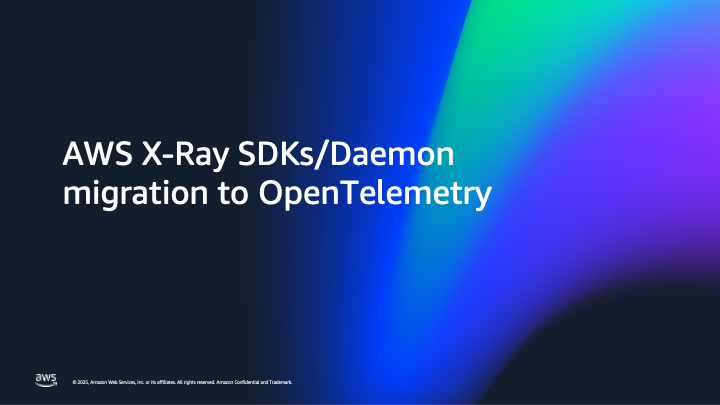AWS Cloud Operations Blog
Category: AWS X-Ray
AWS X-Ray SDKs/Daemon migration to OpenTelemetry
AWS X-Ray is transitioning to OpenTelemetry as its primary instrumentation standard for application tracing. OpenTelemetry-based instrumentation solutions are recommended for producing traces from applications and sending them to AWS X-Ray. X-Ray’s existing console experience and functionality continuous to be fully supported and remains unchanged by this transition. OpenTelemetry is the industry-wide open-source standard for tracing […]
Using Amazon Bedrock and Amazon Nova for AI-Powered Incident Response
In today’s cloud-native world, incident response teams face overwhelming challenges. When critical applications fail, engineers must sift through mountains of observability data across multiple services; all while under intense pressure to restore service quickly. This manual correlation process is time-consuming, error-prone, and often delays resolution, resulting in extended outages and frustrated customers. Traditional monitoring tools […]
Tracing ETL Workloads using AWS X-Ray and AWS Distro for OpenTelemetry
Introduction Data pipelines are essential for modern data-driven companies to gain critical business insights. However, data pipelines commonly fail when new files or datasets from data sources do not conform to the expected schema, leading to downstream job failures, workflow breakdowns, and delayed insights. Additionally, fluctuating data volumes, from a few gigabytes to multiple terabytes, […]
Respond to CloudWatch Alarms with Amazon Bedrock Insights
Overview When operating complex, distributed systems in the cloud, quickly identifying the root cause of issues and resolving incidents can be a daunting task. Troubleshooting often involves sifting through metrics, logs, and traces from multiple AWS services, making it challenging to gain a comprehensive understanding of the problem. So how can you streamline this process […]
Using the unified CloudWatch Agent to send traces to AWS X-Ray
Today, applications are more distributed than ever before and they no longer run in isolation. This is especially the case when utilizing Amazon Elastic Container Service (Amazon ECS) or Amazon Elastic Kubernetes Service (Amazon EKS). A distributed workload or system is one that encompasses multiple small independent components, all working together to complete a task or job. […]
Analyze AWS Microservices architecture to identify and address performance issues
Amazon Payment Services (APS) is a payment service provider in the Middle East and North Africa. With its secure and seamless payment experience, it empowers businesses to build their online presence. Amazon Payment Services is based on a broad and complex microservice based architecture that are dependent on multiple AWS services, including Amazon Elastic Compute […]
Lowering MTTR with Amazon CloudWatch and AWS X-Ray
Customers running microservice-based workloads in a serverless environment frequently have issues with troubleshooting incidents as the data they need can be distributed across hundreds or thousands of components. In this blog post, I will demonstrate how you can reduce the mean time to resolution (MTTR, or the average time it takes to repair or mitigate […]
Observability using native Amazon CloudWatch and AWS X-Ray for serverless modern applications
Introduction In this blog post, we will share how you can use AWS-native observability tools to measure the current state of your modern serverless applications and how to get started with the minimal effort. We will review tools like Amazon CloudWatch and AWS X-Ray and explore how these services can help you instrument your application […]
Announcing AWS CDK Observability Accelerator for Amazon EKS
Today we are happy to announce the all-new AWS CDK Observability Accelerator – a set of opinionated modules to help you set up observability for your AWS environments with AWS Native services and AWS-managed observability services such as Amazon Managed Service for Prometheus, Amazon Managed Grafana, AWS Distro for OpenTelemetry (ADOT) and Amazon CloudWatch. AWS […]
How Audible used Amazon CloudWatch cross-account observability to resolve severity tickets faster
This blog was co-written with Audible’s Apurva Jatakia, Kaushik S., and David Etler. Audible’s consumption services platform serves thousands of requests every second, and each incoming request is served by a distributed set of microservices owned by different teams. An Audible team, in charge of a platform called Stagg, is responsible for five separate microservices. […]









